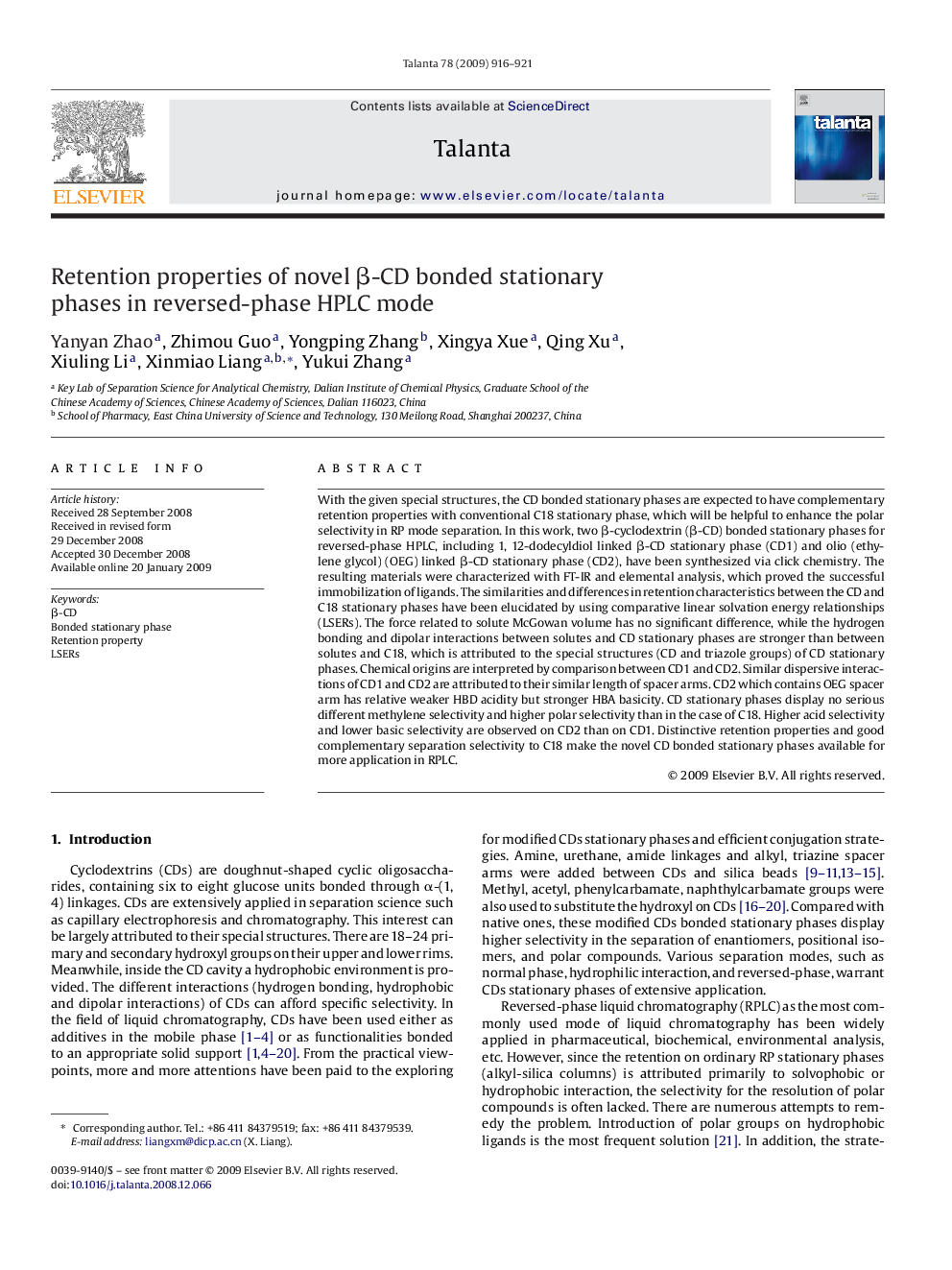| Article ID | Journal | Published Year | Pages | File Type |
|---|---|---|---|---|
| 1244924 | Talanta | 2009 | 6 Pages |
With the given special structures, the CD bonded stationary phases are expected to have complementary retention properties with conventional C18 stationary phase, which will be helpful to enhance the polar selectivity in RP mode separation. In this work, two β-cyclodextrin (β-CD) bonded stationary phases for reversed-phase HPLC, including 1, 12-dodecyldiol linked β-CD stationary phase (CD1) and olio (ethylene glycol) (OEG) linked β-CD stationary phase (CD2), have been synthesized via click chemistry. The resulting materials were characterized with FT-IR and elemental analysis, which proved the successful immobilization of ligands. The similarities and differences in retention characteristics between the CD and C18 stationary phases have been elucidated by using comparative linear solvation energy relationships (LSERs). The force related to solute McGowan volume has no significant difference, while the hydrogen bonding and dipolar interactions between solutes and CD stationary phases are stronger than between solutes and C18, which is attributed to the special structures (CD and triazole groups) of CD stationary phases. Chemical origins are interpreted by comparison between CD1 and CD2. Similar dispersive interactions of CD1 and CD2 are attributed to their similar length of spacer arms. CD2 which contains OEG spacer arm has relative weaker HBD acidity but stronger HBA basicity. CD stationary phases display no serious different methylene selectivity and higher polar selectivity than in the case of C18. Higher acid selectivity and lower basic selectivity are observed on CD2 than on CD1. Distinctive retention properties and good complementary separation selectivity to C18 make the novel CD bonded stationary phases available for more application in RPLC.
